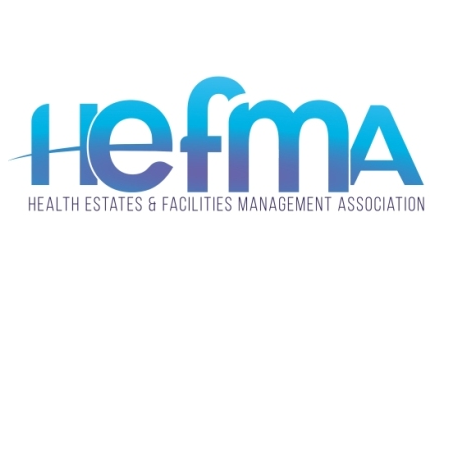David Biggins, Head of Medical Engineering and PAM Lead at York NHS Teaching Hospital Foundation Trust, comments on the implementation of the NHS Premises Assurance Model across a multi-site Estates and Facilities service.
The NHS Premises Assurance Model (PAM) tool is a useful addition to NHS Organisations in the quest to gain and demonstrate assurance on the effectiveness, efficiency and levels of safety in the management of their estate and how it links to the overall patient experience.
The latest, revised version of PAM was launched in 2014 to include both Estates and Facilities functions within its assurance framework and is cognisant of the post Francis regulatory requirements. The working group responsible for revising the tool comprised representatives from NHS, HefmA, IHEEM, AHCP and RIBA.
PAM requires that within each domain a set of self-assessment questions (SAQs) and sub questions are answered by organisations and that levels of compliance against responses are then evidenced and gaps identified.
The five key domains are Safety, Patient Experience, Effectiveness, Efficiency and Governance. Many Estates and Facilities Departments within the NHS have now implemented or are in the process of implementing or undertaking assessment against the model. Once completed, this provides Estates Leaders with a baseline position of how the Estates and Facilities functions under their management are performing against each domain.
Once the baseline position of an organisation is established the tool demands the completion of action plans in order to drive improvements that are identified via the process.
In practice
The tool was fairly easy to navigate and set up using the flow chart provided in the Department of Health guidance issued. Information Technology support with the establishment of a common shared drive or web page to access the tool is a key component of successful implementation especially where key stakeholders are based across multiple sites.
Following implementation, recommendations in the guidance process included identification of key stakeholders, (domain leads and sub leads), setting up a common repository for stakeholders to access the PAM SAQs, relevant legislation, guidance and ACOPS and an area within the repository for involved parties to ‘drop’ and reference evidence via a series of electronic folders.
Throughout the process individual meetings with key Estates and Facilities domain leads and sub leads were held to support teams in identification and submission of suitable evidence with the process culminating in a series of domain workshops to evaluate compliance ratings and identify corrective actions required.
When identifying key stakeholders to lead or contribute to domain outcomes it is important to consider the role of patient and public groups, finance, governance and emergency planning teams and the input of infection prevention control specialists. The inclusion of the capital planning team is also required in order to gain credible evidence in both effectiveness and efficiency domains.
Once the submission is completed and action plans have been drawn up by the various sub leads based in Estates and Facilities as well as other stakeholders it is important that the momentum generated during the initial evidence gathering process is maintained as often exercises such as these can be completed, a box ticked, only for it to sit in a filing cabinet awaiting further action.
PAM presents NHS Organisations with an excellent opportunity to implement or further develop Estates and Facilities compliance systems within their business and by doing so promote cross working between Estates and Facilities Departments, identify risk and potential costs associated with the environment and equipment and ensure robust plans are in place to eliminate and reduce any risks.
All of the above are not just annual tasks but are part of our day-to-day work within Estates and Facilities teams and therefore it is important that PAM becomes part of our day-to-day cycle of business too. How can we ensure this happens?
The Premises Assurance Model Flowchart issued as part of the Department of Health guidance document describes three distinct elements to monitoring PAM via Corporate Risk Committee or similar and via an annual update to the Trust board.
Both of these methods provide assurance at senior management/corporate level but it can be argued that they should be supplemented with some robust monitoring, (especially of action plans generated via the PAM process at an operational management level).
Submissions at both corporate/senior management and operational management levels:
The flow chart references a PAM dashboard which may be developed locally. The dashboard will provide all parties with a situation report describing each domain’s current compliance ratings against the Premises Assurance Model and equally important, the current status of any action plans formulated against any of the domain SAQs.
Robust monitoring of action plans created via the PAM assessment may have several positive effects in organisations:
• Monitors timely improvement against any corrective actions identified
• Allows the plan owner to identify any costs associated with the improvement
• Maintains PAM as a front line tool rather than just a background document visited once a year
• Provides the board with a more regular report on PAM position and improvements - it could be argued that a quarterly board report is more appropriate
Conclusions
The NHS Premises Assurance Model is a valuable addition to existing compliance arrangements within Estates & Facilities Departments. The tool provides a method of demonstrating assurance and compliance against current legislation and guidance relating to Estates and Facilities disciplines whilst also assuring compliance with or identifying developments required against Care Quality Commission essential standards.
It is essential that the Model is firmly embedded into the routine business of all Estates and Facilities functions in order for effective escalation and reporting of issues to senior management and on-going development of services in line with devised action plans to take place.
Routine monitoring of action plans at operational meetings, departmental audit and via Risk and Governance committees and groups as shown in chart 1 is recommended.
Due consideration during the planning stage must be given to the role which non Estates and Facilities professionals can contribute to the overall success of the implementation and monitoring elements.










